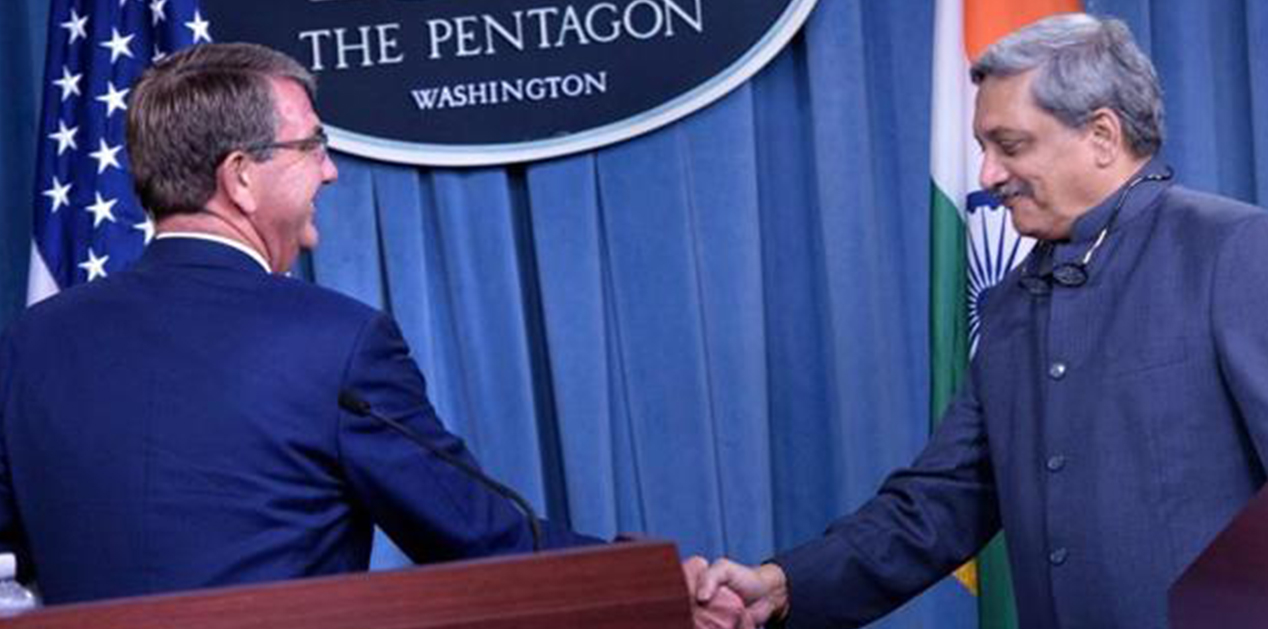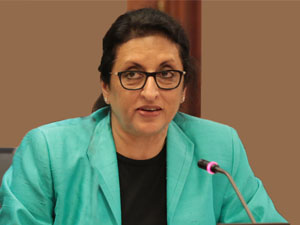As the Obama administration enters its last months in office, it is normal that it would want to assess the state of relations between the United States and India. Both countries have invested a lot in revitalizing this partnership and the US would naturally examine the “broad arch and trajectory” of this relationship, areas that have seen significant advancement and consolidation over the last two years, and also take stock of those issues where progress has not been as desired.
In pursuance of this objective, the last few months have seen a perceptible momentum in US-India relations with a series of high profile meetings not just in New Delhi and Washington DC, but spread across to other parts along the sidelines of important multilateral meetings in Hangzhou and Vientiane in Laos.
Prime Minister Narendra Modi met US President Barack Obama early September at the G 20 Summit at China’s Hangzhou, where President Obama praised the Indian Prime Minister for his “bold policy” move on GST reform in a “difficult” global economic scenario. A few days later the two leaders had a more formal bilateral meeting on the sidelines of the East Asia Summit in Vientiane, their eighth, and probably their last, official meeting before Obama demits office. Both leaders reviewed the immediate priorities in the US-India strategic partnership that included climate change issues, India’s membership to the Nuclear Suppliers Group and also a review of progress on Indo-US collaboration in nuclear energy, solar energy and innovation.
The Second Strategic and Commercial Dialogue
Meetings between the two leaders were preceded by important consultations at the official and ministerial level. The first among the high-profile meetings was when US Secretary of State John Kerry and Commerce Secretary Penny Pritzker traveled to New Delhi for the second Strategic and Commercial (S&C) dialogue. Senior officials accompanied them from 12 different U.S. agencies, as there were a number of preparatory meetings preceding the two main ministerial meetings. This dialogue was co-chaired by the U.S Secretaries and their Indian counterparts External Affairs Minister Sushma Swaraj and Commerce Minister Nirmala Sitharaman. The Strategic and Commercial Dialogue is the main bilateral forum for advancing shared security and economic priorities of the United States and India. While this was a routine annual dialogue between the two countries, the emphasis on reference to freedom of navigation in the South China Sea and respect for the UN Convention on the Law of the Sea (UNCLOS) in the Joint Statement, left no doubt about the role the US sees for India in East Asia as also the strong interdependency between the two countries in operationalizing hitherto untapped dimensions of defence cooperation.
While the defence partnership has made rapid strides, in the economic sphere success has been somewhat limited. One of the key aims of Kerry on his fourth, and last visit to India as the Secretary of State, was to look for ways to reach the targeted five-fold increase in US-India bilateral trade by hiking it to USD 500 billion. But this mark still seems a long way off, as the Bilateral Investment Treaty between both countries, long under negotiation, is nowhere near an agreed conclusion, in large part due to US intransigence and protectionist policies.
A forward move was however made in nuclear energy cooperation. In his press conference, Kerry confirmed that US giant Westinghouse made progress on an agreement about the construction of six nuclear reactors. "We hope to see our civil nuclear cooperation take shape in the form of new reactors that will deliver reliable electricity to tens of millions of Indian households." The deal had been held up in the past by concerns over India's liability laws that would make US companies liable for accidents at plants they helped build. But in February 2016 India delivered the instrument of ratification of the Convention on Supplementary Compensation (CSC) for Nuclear Damage with the International Atomic Energy Agency (IAEA) in keeping with international norms.
The US also promised to push India's bid at "the highest levels" before the next Nuclear Supplier Group (NSG) meeting later this year. Earlier in June, the US led an initiative for India to gain admission to the bloc as a full member that would permit India to trade in sophisticated nuclear material and technology, but China’s stubborn opposition blocked India's membership. It seems unlikely that China will relent especially since it has adopted a partisan approach towards India in the latter’s latest stand off with Pakistan following its complicity in the recent heinous attack on an Indian army base in the Uri sector of Kashmir.
Defence – LEMOA
Soon after Kerry arrived in India, Defence Minister Manohar Parrikar traveled to Washington DC and on 29 August 2016, India and the United States signed a defence agreement that had been in the making for over a decade. Called the Logistics Exchange Memorandum of Agreement (LEMOA), it enables militaries of both countries to use each other’s facilities to restock warships, aircraft and army troops. Earlier in April this year, Carter and Parrikar had announced in Delhi an in-principle commitment to the LEMOA. It is a modified, India-specific version of the Logistics Support Agreement (LSA) or Acquisitions and Cross-Servicing Agreement (ACSA)– an arrangement that the US has with about 80 countries across the world.
According to the Press release, the Agreement includes “Logistic Support, Supplies, and Services to include food, water, billeting, transportation, petroleum, oils, lubricants, clothing, communication services, medical services, storage services, training services, spare parts and components, repair and maintenance services, calibration services, and port services.” Reciprocal logistic support would be used exclusively for the purpose of authorized port visits, joint exercises, joint training, and humanitarian assistance and disaster relief efforts. Contrary to misgivings about the intrusive nature of the pact, the LEMOA does not authorize the establishment of any military bases. Neither does the agreement create any obligations on the part of either India or US to carry out any joint activity of a military nature.
Parrikar and Carter also made it clear in their respective remarks what LEMOA meant. Parrikar stated, “It (LEMOA) doesn’t have anything to do with the setting up of a base. It’s basically logistics support to each other’s fleet, like supply of fuel, supply of many other things that are required for joint operations, humanitarian assistance and many other relief operations. So, it will basically ensure that both navies can be supportive of each other in the joint venture operations we do, exercises we do.” Carter said the agreement would make joint operations between their militaries logistically easier and more efficient. “It is fully mutual. In other words, we grant one another completely equal access and ease under this agreement. It’s not a basing agreement of any kind, but it does make the logistics of joint operations so much easier and so much more efficient.”
Detractors should in fact view the LEMOA as a strategic balancing act by India in response to China’s growing assertiveness, something by which India can secure its own interests through the creation of a stable regional environment, and without targeting any other country. The time has come for India to exercise its strategic choices in a robust manner rather than being diffident in articulating its priorities and choices. This was summed up most aptly by a senior US State Department official who said, “As we look at the different challenges and opportunities that we are faced with across the world, increasingly we are looking to engage with and partner with India in addressing those challenges. And India will increasingly play a consequential role in advancing peace and security across the Indian Ocean and across the globe. So US India partnership is critically important for both countries.”
Future Trajectory of US-India Relations
There has been a steady and exponential increase in US-India relations beginning with the visit of President Bill Clinton to New Delhi in 2000. The real breakthrough however came during the George Bush administration with the signing of the historic Civil Nuclear Deal that has paved the way for the high level of defence and technology partnership that India and the United States share today. Obama’s initial incongruity towards India fueled largely by his China first policy and a tendency to view India through the prism of South Asia where Af-Pak enjoyed greater prominence, fortunately gave way to a more realistic assessment of India’s strategic importance and relations between the two countries have seen unprecedented consolidation in many areas.
While India today enjoys bipartisan support in the United States among both the Republicans and Democrats who recognize the value of partnering with it, India must prepare itself adequately for the next administration in the USA. India needs to build upon the current momentum and engage more closely not just with US officials, but with US lawmakers as well, to rule out any potential uncertainty in relations when the new administration assumes office in January 2017. While Hillary Clinton as President would ensure a continuity and further strengthening in relations of the past sixteen years, a probable Trump Presidency could be a challenge in many ways, not just for India and the United States but for Asian security and in fact, global security as well. In American politics today, India’s democratic institutions, rapid growth, and strategic location make it an easy country to support and India must take advantage of this.
Published Date: 26th September 2016, Image Source: http://www.hindustantimes.com
(Disclaimer: The views and opinions expressed in this article are those of the author and do not necessarily reflect the official policy or position of the Vivekananda International Foundation)










Post new comment